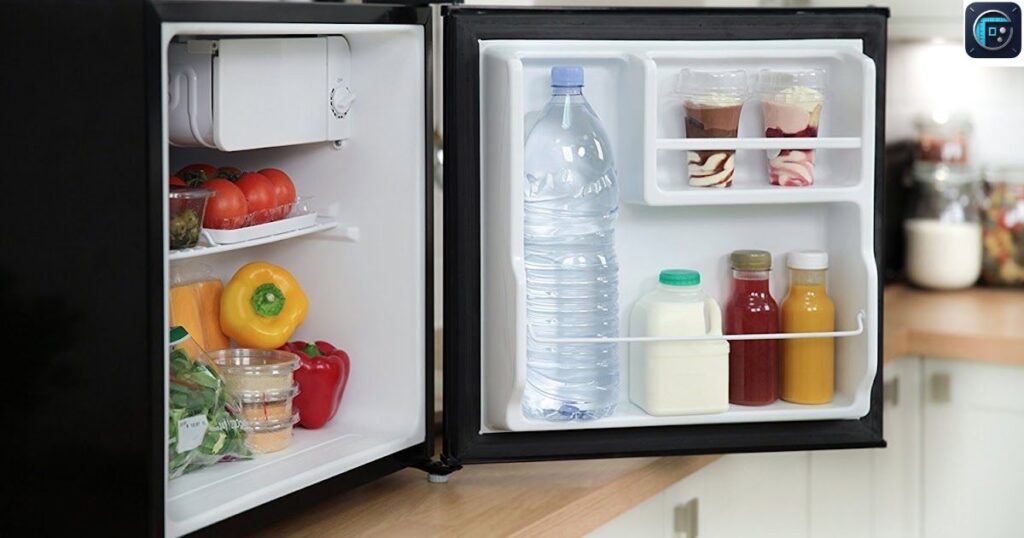You’re probably here because you’re wondering what 30 kilograms really feels like-and you’re not alone. Whether you’re packing a suitcase, lifting weights, or trying to estimate shipping costs, knowing how heavy this mass is can make a big difference.
The best way to understand it? Compare it with familiar things you’ve seen, used, or carried in everyday life. That’s exactly what we’ll explore-real-world examples that help you visualize and feel the weight of 30 kg with ease.
How Much Is 30 Kg?
Thirty kilograms might not sound like much on paper, but in real life, it’s a significant amount of weight. It’s roughly the same as carrying a medium-sized dog, a fully packed suitcase, or a large bag of cement. Whether you’re dealing with fitness equipment, moving boxes, or travel baggage, 30 kilograms represents a noticeable load that requires attention and care when lifting or handling.
In daily situations, this amount of weight often shows up in physical taskslike carrying groceries in bulk, lifting construction materials, or even picking up a child. Understanding what 30 kg feels like can help you plan better, avoid strain, and know your physical limits.
How Much Is 30 Kilograms in Pounds?
If you’re used to pounds, converting 30 kg can be very helpful-especially for travel, fitness, or online shopping. To be exact, 30 kilograms equals 66.14 pounds. That’s about the weight of a large duffel bag filled with clothes, or a mid-sized home appliance like a small fridge.
This conversion is especially useful in countries that use the imperial system. Whether you’re tracking weight loss, checking airline luggage limits, or shipping a package overseas, knowing that 30 kg is just over 66 pounds gives you a clearer sense of what to expect.
15 Common Household Items That Are 30 Kilograms
Need help visualizing what 30 kg really feels like? Here are 15 everyday things around your home that weigh close to or exactly the same. From appliances to food, these relatable objects make the number easy to understand.
| 📦 Item | 📏 Actual Measurement |
| 🧱 A 30 Kg Bag of Cement | One standard construction-grade cement bag |
| 🎨 Six Gallons of Paint | Each gallon weighs about 5 kg |
| 🏋️ A 30-Kg Dumbbell Set | Two 15-kg dumbbells or three 10-kg ones |
| 🍉 Three Average-Sized Watermelons | Each watermelon weighs roughly 10 kg |
| 🥛 Eight Gallons of Milk | One gallon of milk weighs around 3.7 kg |
| 🚲 Two Mountain Bikes | Each average bike weighs 14–15 kg |
| 🐕 An Adult Dalmatian | Adult male Dalmatians typically weigh 30 kg |
| 🔊 A Pair of Big Speakers | Each speaker unit weighs about 15 kg |
| 🛏️ Queen-Size Box Spring | Full frame box springs can weigh 30 kg |
| 🍽️ Four Microwave Ovens | A midsize microwave weighs 7–8 kg |
| 🎃 Five Average-Sized Pumpkins | One pumpkin averages 6 kg |
| 👶 A 6-Year-Old Child | Average weight for a healthy 6-year-old |
| 🧺 A Standard Domestic Washing Machine | Front-loading machines weigh ~30 kg |
| 🧊 A Dorm-Size Refrigerator | Mini fridges can weigh between 28–30 kg |
| 🔋 A Large Car Battery | Commercial batteries weigh 25–30 kg |
A 30 Kg Bag of Cement

A standard bag of cement used in construction often weighs exactly 30 kilograms. It’s one of the most direct and literal examples of this weight, commonly seen on building sites and in hardware stores. This dense, tightly packed material gives a perfect representation of what 30 kg feels like when lifted or carried.
In practical terms, these bags are moved manually by laborers, contractors, and DIYers during masonry work. Whether you’re laying bricks, mixing concrete, or doing patio work, handling one of these bags shows how physically demanding this load can be. Many home improvement tasks revolve around this weight as a standard unit of measurement for materials.
Cement bags have remained largely unchanged in size for decades, as this weight strikes a balance between efficiency and human lifting limits. In regulated industries, the 30 kg weight also helps maintain worker safety and ergonomics. Its consistency has made it a reference point not only for pricing and transport but also for calculating structural loads in construction planning.
Read More <<>> How Big Is 6 Centimeters
Six Gallons of Paint

Six full gallons of interior or exterior paint together weigh close to 30 kilograms, making this a practical and easily visualized comparison. Since each gallon weighs approximately 5 kilograms depending on the brand and type, stacking six of them gives a near-perfect sense of that bulk.
In renovation projects or large-scale painting jobs, paint is often delivered in bulk, and professionals commonly handle several gallons at once. Knowing this weight helps contractors plan material transport, assess labor needs, or even estimate structural weight during planning for tall scaffolding or high surfaces.
Paint has played a pivotal role in architecture, design, and preservation. From ancient murals to modern industrial coatings, its packaging has evolved-but gallon containers remain a standard. The combined load of six gallons also represents logistical concerns like shipping costs, storage capacity, and occupational health considerations in commercial painting services.
A 30-Kg Dumbbell Set

A full dumbbell set that totals 30 kg offers a tangible feel for this level of weight. Whether it’s a pair of 15-kg dumbbells or adjustable plates adding up to that figure, the bulk is immediately noticeable when held in both hands.
In fitness routines, this weight is commonly used for intermediate-level strength training. From lunges to chest presses, it strikes a balance between challenge and control. Gym-goers often use this load to build muscle endurance or transition into heavier sets as they progress.
Weight sets like this have evolved with trends in home fitness, from old-school iron to rubber-coated, adjustable designs. The 30-kg total is often selected for personal training kits due to its versatility, allowing multiple exercises without overwhelming newer users. It’s also a threshold weight used in strength standards across many training programs worldwide.
Three Average-Sized Watermelons

If you’ve ever picked up a ripe watermelon at the grocery store, you know it can be surprisingly heavy. On average, a single medium watermelon weighs around 10 kilograms, so three together add up to roughly 30 kilograms. Holding or carrying them at once gives you a real sense of what this total weight feels like.
Watermelons are common in households during summer months, especially for outdoor gatherings, picnics, or family meals. Vendors and shoppers often handle multiple at once during peak season. In this context, knowing their combined mass helps with transport, storage planning, and refrigeration space.
Historically cultivated for thousands of years, the watermelon has become both a cultural symbol of summer and a logistical challenge in agriculture. Farmers use this weight range to sort produce for sale and shipment, ensuring consistent pricing and handling. From field to market, this bulk measurement plays a key role in supply chain operations for fresh produce.
Eight Gallons of Milk

Eight full gallons of milk weigh just about 30 kg, with each gallon averaging 3.78 kilograms. Carrying them all at once would require both arms-and some strength-making this a surprisingly relatable way to visualize the mass of that load.
Milk is a staple in households, restaurants, and schools, typically purchased in large quantities by families or food services. This measurement is useful for logistics planning in grocery supply chains or food storage systems, especially when estimating delivery weights or shelf capacity.
From dairy farms to distribution centers, milk weight plays a vital role in transport efficiency and refrigeration planning. Historically, milk delivery was based on volume, but today’s supply systems factor in the product’s bulk to avoid overloading trucks or storage coolers, making this comparison both practical and industry-relevant.
Two Mountain Bikes

When placed on a scale, an average mountain bike weighs between 13 to 15 kilograms depending on its frame and components. Combine two of them, and you’re holding approximately 30 kilograms-a surprisingly solid weight when lifted together or stacked for transport.
Mountain bikes are built for durability and trail performance, often used in off-road racing, commuting, and weekend adventures. This weight is especially relevant for cyclists loading bikes onto racks, into vehicles, or carrying them upstairs in apartments or public transport systems.
Bike designers carefully balance strength and lightness, making frame weight a crucial factor in competitive cycling and performance engineering. Historically, steel frames were heavier, but modern alloys and carbon fiber have reduced weight without sacrificing strength-yet two full bikes still give a strong, tactile example of this physical mass in real-world motion and storage planning.
An Adult Dalmatian

A fully grown Dalmatian typically weighs around 28 to 32 kilograms, making it a near-perfect match for visualizing this weight. If you’ve ever picked one up or tried walking one that loves to pull, you’ve felt the heft of this elegant yet muscular breed.
Dalmatians are active dogs often used in family homes, dog sports, or even as firehouse mascots. Understanding their average weight helps pet owners plan for crate size, proper diet, and the physical effort required to manage them, especially during travel or veterinary visits.
Historically bred as carriage dogs, Dalmatians needed endurance and sturdiness to keep pace with horses-qualities reflected in their weight range today. Their unique spotted coat and association with firefighters have made them culturally iconic, but their physical build also highlights just how substantial this level of weight is when it’s alive and energetic.
A Pair of Big Speakers

Large floor-standing speakers, especially those used in home theaters or professional audio setups, often weigh between 12 to 18 kilograms each. When paired together, their combined weight comes very close to 30 kilograms, making them a practical and relatable way to picture this level of mass.
These speakers are commonly found in music studios, entertainment rooms, or event venues where powerful sound projection is needed. Their weight isn’t just about bulk-heavier speakers tend to offer better stability and deeper bass, making this measurement useful for setup planning and space arrangement.
From a technical standpoint, manufacturers design speaker cabinets with dense materials like MDF or hardwood to reduce vibrations and enhance sound quality. As audio technology evolved, size and weight remained indicators of performance in high-fidelity systems. Moving or installing a pair of such speakers requires consideration of both their dimensions and the combined load they represent.
Queen-Size Box Spring

A standard queen-size box spring typically weighs close to 30 kilograms, depending on its construction and materials. With its wooden frame, metal supports, and fabric covering, this piece adds noticeable heft to a bed setup, especially when moved or lifted.
Box springs are essential in many households, acting as a foundation beneath the mattress to improve support and extend mattress life. When assembling or relocating bedroom furniture, knowing the approximate weight helps plan the process and prevents injury during lifting or transport.
Modern box springs vary in weight depending on innovations in design-some newer models use lighter materials, while traditional ones remain closer to this average mass. In moving services or interior design, planners often consider the bulk and load-bearing role of such components to optimize room layout, floor protection, and storage logistics.
Four Microwave Ovens

A typical countertop microwave oven weighs between 7 and 8 kilograms. Grouping four of them together brings the total weight close to 30 kg, offering a surprisingly accurate and accessible way to picture this amount of mass.
Microwave ovens are a kitchen staple, used daily in homes, offices, and restaurants. Whether moving appliances during a kitchen renovation or estimating load for delivery, knowing the collective weight of multiple units helps with logistics and safe handling.
Historically, microwave ovens revolutionized food preparation, evolving from bulky, industrial machines to compact, efficient tools for daily use. Their weight reflects the internal components-transformers, metal casing, and turntables-which contribute to both their functionality and their physical heft when multiplied. This makes them a useful reference point in appliance transportation and bulk storage planning.
Five Average-Sized Pumpkins

A medium-sized pumpkin typically weighs around 6 kilograms, so placing five of them together gives you a combined load of roughly 30 kilograms. This visual makes it easy to relate this weight to something familiar and seasonal.
Pumpkins are commonly used in cooking, decoration, and agriculture. During harvest time or at markets, transporting several at once is a real-world example of managing a load around this size-often requiring a wheelbarrow or sturdy crate.
Culturally, pumpkins play a big role in autumn traditions, especially during Halloween and Thanksgiving. Their bulk and density come from thick flesh and water content, making them a reliable point of comparison for weight estimation in farming, retail, or planning festive displays.
A 6-Year-Old Child

The average weight of a healthy 6-year-old child falls close to 30 kg, depending on factors like height, gender, and genetics. Using a child’s weight as a comparison makes this measurement instantly relatable, especially for parents and caregivers.
In daily life, lifting or carrying a child of this size-whether for fun, safety, or assistance-demonstrates how manageable or substantial this weight can feel. It’s also a common reference in travel or medical scenarios where weight restrictions apply.
From a developmental standpoint, reaching 30 kg around age six often signals steady physical growth and nutritional progress. Pediatricians use such benchmarks to monitor health, while marketers and manufacturers design products like car seats and strollers around these average weight limits.
A Standard Domestic Washing Machine

Most standard household washing machines weigh around 30 kilograms, making them an ideal benchmark for understanding this level of weight. Their dense build and compact size show how much 30 kg can be packed into a single, sturdy appliance.
In the real world, washing machines are moved only occasionally-typically during home relocation or renovations. Understanding their weight helps when hiring movers or checking floor load limits in apartments or older buildings.
From an engineering perspective, manufacturers carefully balance drum capacity, motor size, and insulation to stay within this weight class. Historically, domestic washing machines have slimmed down from their heavier predecessors while maintaining power and durability-making 30 kg a sweet spot for modern households.
A Dorm-Size Refrigerator

Compact refrigerators commonly found in college dorms or small apartments usually weigh about 30 kg. Though they appear light and manageable, their solid construction and internal components bring them right into this weight category.
These mini fridges are essential for storing snacks, beverages, and leftovers in tight spaces where full-size appliances aren’t practical. Understanding their weight helps when planning transport, especially for students moving into shared living spaces.
On a design level, these fridges balance weight and energy efficiency by using smaller compressors and insulation layers. Over time, they’ve become a symbol of modern minimalism-offering basic refrigeration with just enough heft to remain sturdy yet portable.
A Large Car Battery

Car batteries used in heavy-duty vehicles, like trucks or SUVs, can weigh close to 30 kilograms. These high-capacity batteries are dense and robust, making them a solid match when visualizing this weight.
In real-world terms, mechanics and car owners regularly handle these for installations or replacements, especially in vehicles requiring stronger electrical output. Knowing their weight helps ensure proper tools and lifting techniques are used for safety.
From an engineering standpoint, these batteries contain thick lead plates and large acid reservoirs-necessary for consistent cold starts and durable performance. Their bulk plays a vital role in vehicle reliability, particularly in extreme weather or demanding environments.
How Heavy Is 30 Kg?
30 kilograms is considered a moderately heavy weight-not impossible to lift, but not exactly light either. For most people, lifting this amount comfortably requires good posture, proper technique, and a little muscle. It’s the kind of weight you can carry short distances but probably wouldn’t want to hold for long without a break.
In context, this is about as heavy as a six-year-old child, a large backpack stuffed with supplies, or two full water cooler jugs. It’s a common threshold in gyms, workplaces, and transport, and often marks the point where you should consider whether you need assistance or equipment to move it safely.
Convert 30 Kilograms to Common Measurements
Here is how 30 kilograms translates into other commonly used weight units around the world.
Converted Values:
- Pounds (lbs): 66.14 pounds
- Ounces (oz): 1058.22 ounces
- Grams (g): 30,000 grams
- Metric Tons (tonnes): 0.03 metric tons
- Stones (UK): 4.72 stones
- Milligrams (mg): 30,000,000 milligrams
Safety Tips for Handling 30kg Weights
Lifting or moving 30 kilograms might not seem risky at first-but poor technique can quickly lead to back injuries or muscle strain. Always bend your knees and keep your back straight when lifting something this heavy. Use your legs-not your back-to push the weight upward.
If you’re transporting 30 kg objects over a distance, use tools like a dolly, cart, or even a second person. Wearing gloves can also improve grip and reduce the risk of dropping the item. Whether you’re at work, at home, or in the gym, respecting this weight level helps protect your health and keeps tasks safe and efficient.
FAQ’s
What is 30 kg in weight?
It is equal to 66.13 pounds. This amount can be visualized as similar to the weight of a medium-sized dog or a compact piece of household furniture.
How much is 1 kg to 1 pound?
One kilogram converts to approximately 2.2046 pounds. This is a standard conversion used in many international weight measurements.
Is it normal to weigh 30kg?
Yes, but it depends on age, height, and health context. For children, it can be typical, while for adults it would be considered underweight and might require medical attention.
How much is 30 in kilograms?
If the number 30 refers to pounds, then it equals about 13.6 kilograms. If it refers to another unit, a more specific conversion would be needed.
How old is 30 kg?
Weight does not directly correlate with age, but many children reach this weight range between ages 8 to 10, depending on growth rate and body composition.
Conclusion
Understanding what 30 kilograms really looks or feels like becomes much easier when it is tied to everyday objects. From watermelons and dumbbells to car batteries and mini fridges, each comparison helps turn an abstract number into something you can picture, lift, or roll into place.
This article aimed to give you simple, relatable ways to grasp this weight by connecting it to familiar things. It took the guesswork out and replaced it with clear mental images that stay with you.


